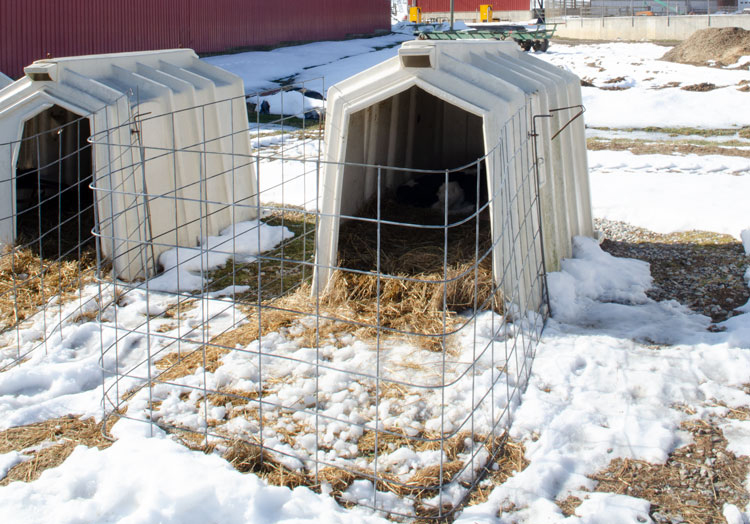
While it has been a somewhat mild winter so far in parts of the country, that doesn’t mean there hasn’t been cold days and nights, especially for people working outside and for calves housed outdoors.
In a Professional Dairy Producers of Wisconsin (PDPW) Dairy Signal webcast, calf managers for two Badger State dairy farms talked about young stock care. Part of the conversation focused on handling calves during the winter months.
Stacy Jauquet owns and operates Jauquet’s Hillview Dairy LLC with her husband, Dave, near Luxemberg, Wis. Calf care is a focal point on their dairy.
“It’s almost like the world stops turning when a calf is being born,” she said. “I do everything in my part to make sure she can achieve her genetic potential and live the healthiest life possible, and the happiest life.”
Jauquet said calves are attended to immediately after birth and fed colostrum within 45 minutes. They use two towels to dry and stimulate the calf, and in the winter, they are very careful to dry the ears as well. The calf is kept in a heated hutch until it is completely dry.
All preweaned calves are housed outdoors in individual hutches. Prior to milk delivery, Jauquet said they use hot water to warm up the calf pails. “We take the chill off so the milk does not cool down,” she explained.
They prepare their milk at 113°F to 114°F, so that by the time the milk is carried out to the calves and poured in the pails, the milk is no less than 106°F. “This way, they are not using their body, and their calories, to warm up what I just fed them,” Jauquet said. “It’s always important to regulate milk temperatures and take into account the weather.”
Ermith Ocampo, the Livestock Director for Milk Source LLC based in Kaukauna, Wis., shared that newborn calves stay with their dam for about 20 minutes to be licked partially dry and stimulated. A coat is then put on the calf, and it is moved to a super hutch with a heat lamp. Within one hour of birth, the calf is fed 1 gallon of colostrum, and it receives another gallon eight hours later. Before the calf is moved to its individual hutch, it gets a dry calf jacket to wear for the next three weeks or so.
In cold weather, Ocampo said calf milk is prepared at 112°F to 115°F. It is their goal that milk is still above 103°F by the time a calf is done drinking.
Other adjustments for winter
Jauquet said they do not make a lot of changes to their calf routine in the winter. They still feed warm water three times a day, acknowledging the need to collect and dispose of unconsumed water prior to it freezing in the pails. They do increase the volume fed slightly, going from a maximum of 8 pints for the biggest calves in the summer to 10 pints in winter. She also said they will offer electrolytes to sick calves after a feeding to get more warm fluids into them.
Calves wear earmuffs during the first week to week and a half to avoid frostbitten ears. Jauquet said they also use pieces of plywood as a movable windbreak for each hutch. “It’s something so simple,” she shared.
Ocampo noted that if calves are fed more solids in their milk, they should drink more water, and they find it a challenge to get calves to drink much water when it is cold out. Instead, their farm focuses more on training calves to drink their full milk allotment.
“We spend time making sure they drink all their milk, so we know the calf is not missing half a meal,” Ocampo explained.
The softer, the better
Milk Source calves are bedded with sawdust and straw. In winter, knives are removed from the bedding chopper so that the straw pieces are longer, providing a fluffier bedding material.
Jauquet agreed with the need for warm, fluffy bedding. She is very particular about the bales of straw used to bed calves and the length of cut of the straw.
She said they use a lot of straw in their hutches and bed calves every day. “For me, it’s easier to clean that hutch than take care of a sick calf,” Jauquet shared.
She said that she pays close attention to weather forecasts and encourages her calf feeders to do the same. To take the best care of calves in changing weather conditions, Jauquet advised, “You have to be prepared for what’s ahead.”








